Late in the summer of 2023, New York City-based photographer Michael George traveled to a remote finger of land jutting off of Michigan’s Upper Peninsula out into Lake Superior. The land, known as the Keweenaw Peninsula, formed as lava poured out of a rift in the Earth 1.1 billion years ago—the same geologic shift that resulted in the deep basin now known as Lake Superior.
Because of the way it formed, the Keweenaw is today home to volcanic bedrock, numerous minerals and the largest deposit of pure copper in the world. It is also the home of several small communities who, in 2022, worked with The Nature Conservancy to outline a plan to protect 32,000 acres of this landscape of rock and forest.
When Michael George set out to cover this land deal and what makes the Keweenaw unique for a story in Nature Conservancy magazine, he was challenged first and foremost with figuring out how to convey the area’s geological history.
“Some of the rocks that you can kayak near or touch are, I think, some of the oldest exposed rocks on the planet, like some of the geology is billions and billions of years old,” he says.
But capturing such a vast sense of time and history and geographic scope can be hard to do through a lens.
“You really need to shrink things down when you’re looking at geology because it’s overwhelming to process and you’re standing on it,” he says.
To do that, George met with a geologist at a mineral museum and explored a historic mine-turned museum. He used a drone to capture images of the peninsula’s shores and rocky exposed ridgeline. And, finally, struck by the numerous fluorescent rocks present in the area, he set out to photograph a local oddity: a syenite rock laced with the mineral sodalite, which glows under an ultraviolet light.
The experience left George and his assistant giddy with adrenaline, he says. “It’s hard as a photographer who’s been doing it a while to shoot something that feels brand new,” George says. But that night felt different.
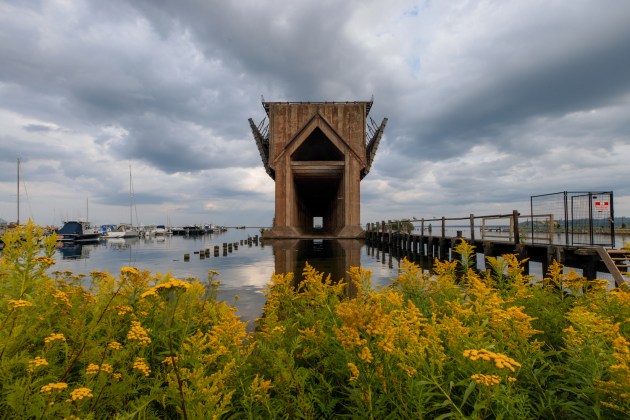
The Lower Harbor Ore Dock in Marquette, the largest city on the Upper Peninsula, was built to transfer iron ore onto ships that could ferry it to the Midwestern steel mills of the early 1900s. Today, like the rock museums and former mines of the Keweenaw, the structure is a relic of one of the major industries to shape the region.
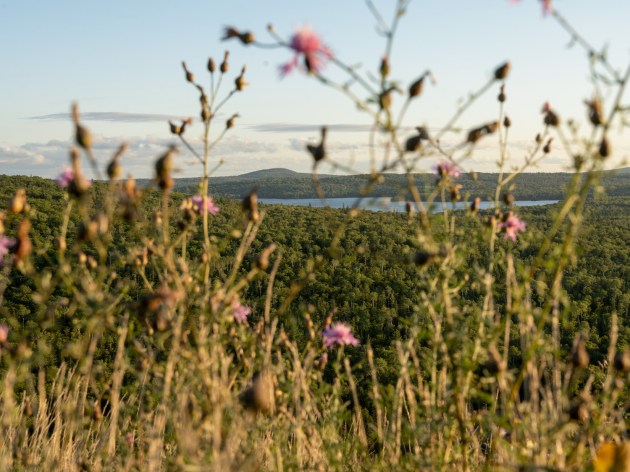
George joined locals and visitors who gathered at Brockway Mountain Lookout near Copper Harbor to watch the sunset. “What was really beautiful about visiting there is everyone seemed like they were, in their own way, a steward of the land that they came from,” George says. The Nature Conservancy is working with the local communities to determine how the land can be used in the future.
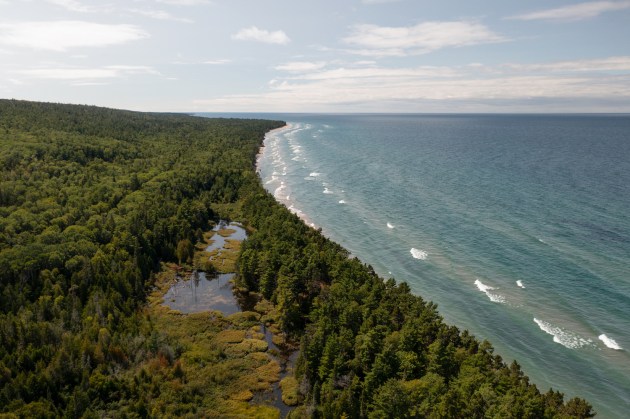
George used a drone to capture overhead views of the area’s exposed ridgelines—remnants of its volcanic origins—and its shorelines along Lake Superior. “Especially along the coastline, you can literally see the copper rising up out of the water,” he says. “You’ll find rocks on the beach that have oxidized turquoise color because they’re coated in copper.”
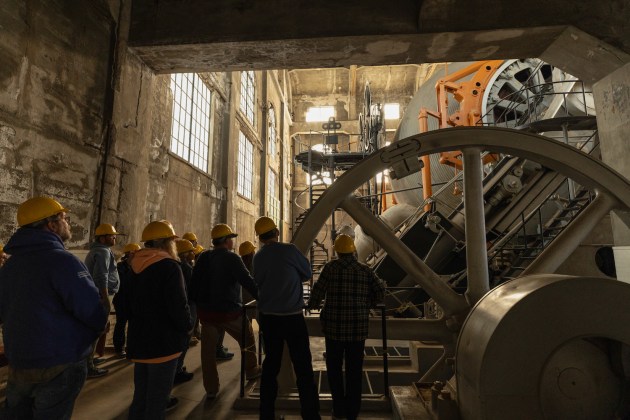
George photographed the Quincy Mine (now a museum) to document the area’s copper-mining past. The mine closed in 1945, with some activities continuing through the 1970s.
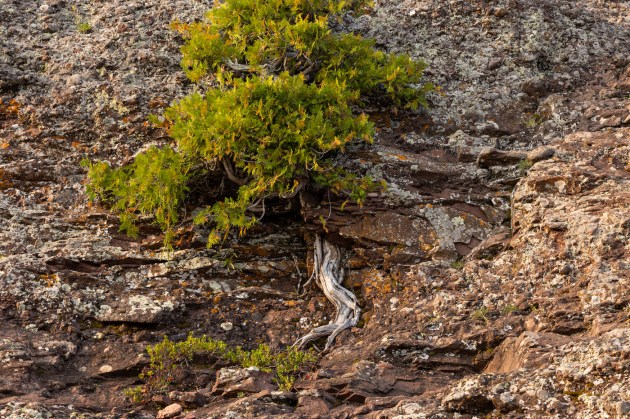
The forests on the Keweenaw Peninsula are a mix of old- and new-growth. George joined Nature Conservancy staff traveling the backroads in the woods near Horseshoe Harbor.
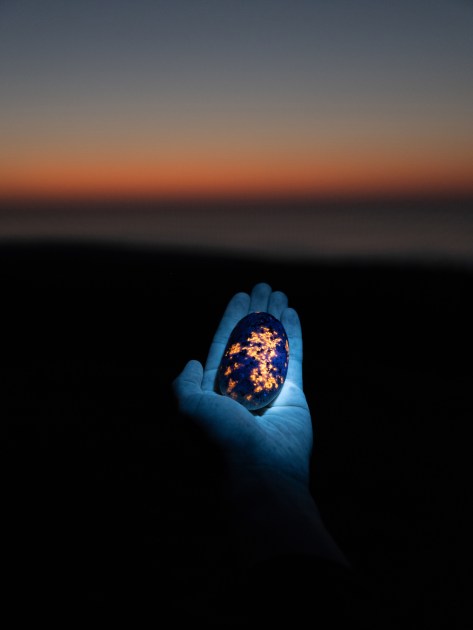
George set out to photograph a local oddity he jokingly called dragon’s eggs. These syenite rocks are laced with fluorescent sodalite, causing them to glow under an ultraviolet light. (The ultraviolet appears blue when photographed, and George used a long exposure to capture both the fluorescent glow and the sunset behind the rocks.) “They all have completely different patterns—some look like a galaxy,” he says. “It makes it even more interesting to see how the light within it is revealed, once you shine a light on it.”
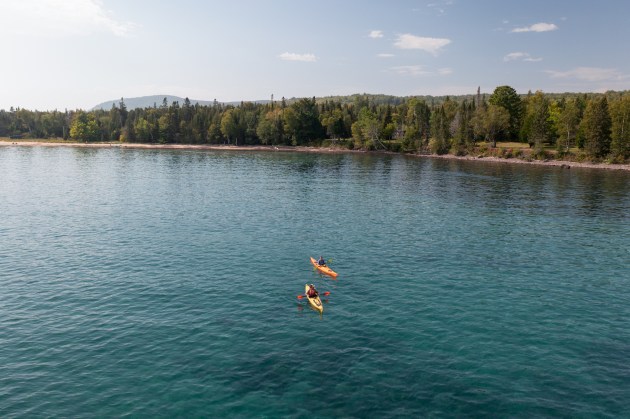
George and his assistant spent a half-day kayaking along the coastline of the Keweenaw Peninsula to see sea stacks, a geological formation caused by erosion, and natural rock arches formed in Lake Superior.
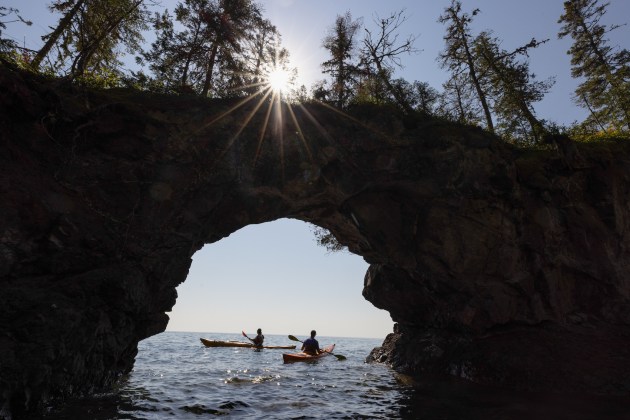
“It’s not something you often see so close to the coast,” George says. “We got some really beautiful perspective shots of small kayaks with these massive rock formations and the lake behind them.” The shots, George says, again helped convey how the area’s unique geological history has shaped its landscape today.
See more of George’s photography from the Michigan coastline in the story “Wild North” in the latest issue of Nature Conservancy magazine. Read that story and others from Issue 2, 2024 here.
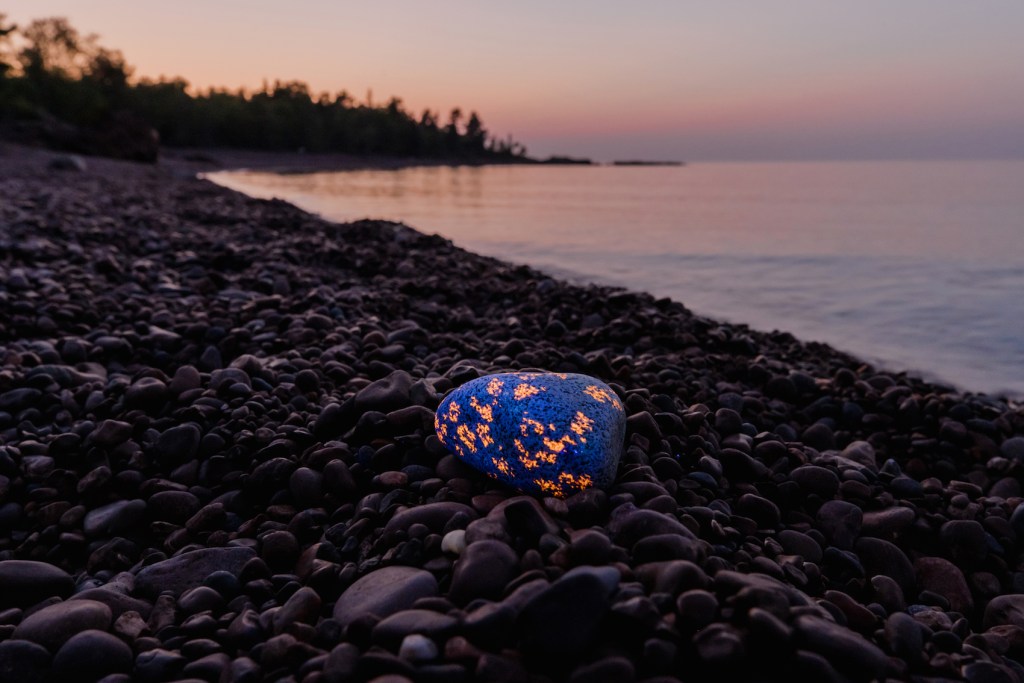



Join the Discussion